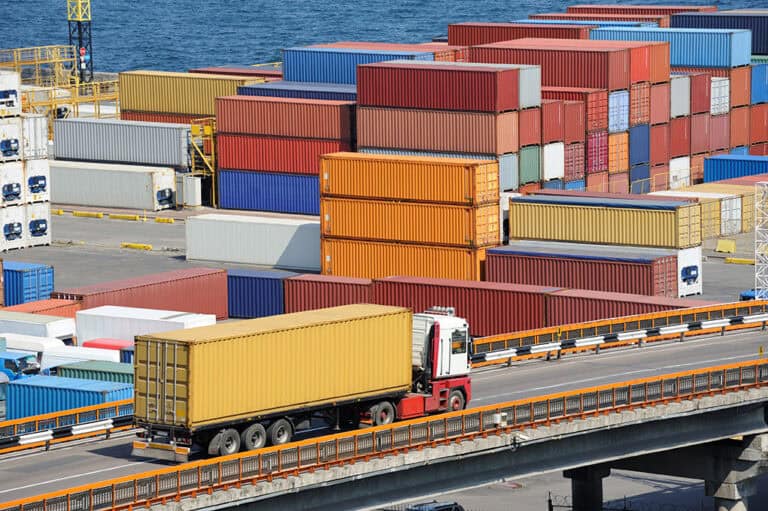
Identifying and tracking principal players in the global supply chain is very important to US Customs and Border Protection (CBP) and its partnering government agencies. The year 2020 was significant due to the number of shipments entering the United States—32.8 million imports—and the volume of goods seized for various violations, including $1.3 billion worth of products with intellectual property rights (IPR) violations. Keeping track of key players involved in a violation may get easier for CBP as it moves toward a new Global Business Identifier (GBI) that will provide greater clarity on the product in a transaction and the supply chain player initiating it.
The Global Business Identifier initiative is an interagency transformation project focused on creating a unique identifier that will represent a company’s primary legal entity and ownership, its specific business, global locations, and the supply chain role it performs within a transaction. The GBI will provide greater ease when identifying high-risk shipments, a plus with the increase in e-commerce and low-value transactions. Yet simultaneously, the GBI will target more of your global trade data than ever before.
Creating the identifier
The newly established Global Business Identifier will pull information from existing identifiers in the market. Specifically, three sources are currently being explored to create the GBI:1
- Legal Entity Identifier (LEI), a twenty-digit alphanumeric number with underlying reference data elements unique to a legal entity
- Data Universal Numbering System (DUNS), a nine-digit number identifying a unique business establishment
- Global Location Number (GLN), a thirteen-digit number utilizing GS1 standards with underlying reference data elements that are customizable to location, function, and operations
The GBI number must meet all eight core competencies identified by CBP to meet the required data needs for the project. As shown in Figure 1 below, these competencies include globally unique, separate legal entities, location- and function-specific, tracks supply chain roles, managed for accuracy, oversight and governance, data sharing, and internationally recognized.
Figure 1: Core Competencies to Be Met by the GBI
(Source: U.S. Customs and Border Protection. Global Business Identifier (GBI) Initiative CBP 2021 Virtual Trade Week Briefing, July 22, 2021)
The GBI Evaluative Proof of Concept will target ten countries of origin and six major categories of products (see Figure 2). The countries include Australia, Canada, New Zealand, United Kingdom, China, France, Mexico, Vietnam, Italy and Singapore. Alcohol, medical devices, personal items, seafood, toys, and US goods returned are the product categories of focus.
Figure 2: Countries and Products Selected for the GBI Evaluative Proof of Concept
(Source: U.S. Customs and Border Protection. Global Business Identifier (GBI) Initiative CBP 2021 Virtual Trade Week Briefing, July 22, 2021)
Replacing the Manufacturer Identification (MID) code
Customs Border Protection is not alone in moving towards a more comprehensive identifier in the global supply chain. While US imports are generally traced through the Manufacturer Identification (MID) number, the World Customs Organization uses a Trader Identification Number (TIN) that pulls master data from companies participating in the Authorized Economic Operator program. Recent talks between these two groups indicate the GBI may be more robust than the TIN and provide greater data quality while adhering to international standards. From a global customs perspective, the GBI supports the ability to identify high-risk shipments and non-compliance activities and can make it easier to enforce measures related to IPR violations and counterfeit products.
With the recently published Federal Register Notice of October 6, 2021, CBP is quickly advancing the GBI Evaluative Proof of Concept and anticipates implementation to begin as early as spring of 2022 through the cargo release and targeting capability. In addition to leveraging industry-leading import management software, US importers should work closely with their customs brokers and trade associations to fully understand the impact of this initiative, the information collected by CBP, and how it may impact a company’s trade compliance programs.
E2open: Your tool for global trade compliance
Global trade regulations will only continue to change, and companies need to keep up to remain compliant. E2open’s Global Trade Management application allows organizations to manage every aspect of global trade on a central platform. From centralizing and standardizing processes, to automating tasks and leveraging a worldwide network of trading partners, e2open can help you keep your goods moving at the border when it matters most.
If you’d like to receive complimentary global trade updates, you can subscribe to our Global Trade Newsletter. If you would like to talk to one of our experts, don’t hesitate to contact us.







